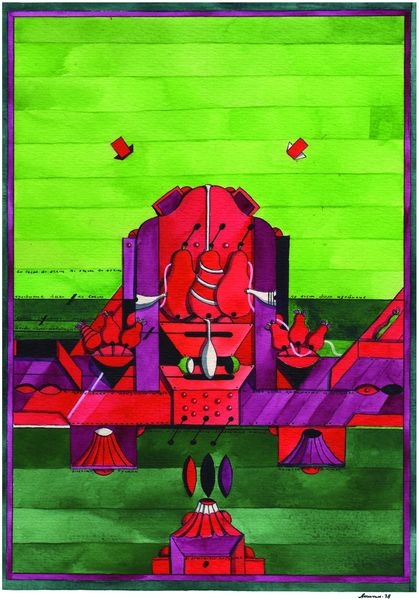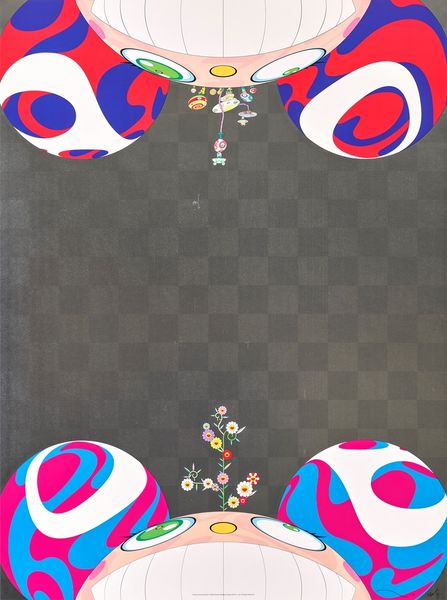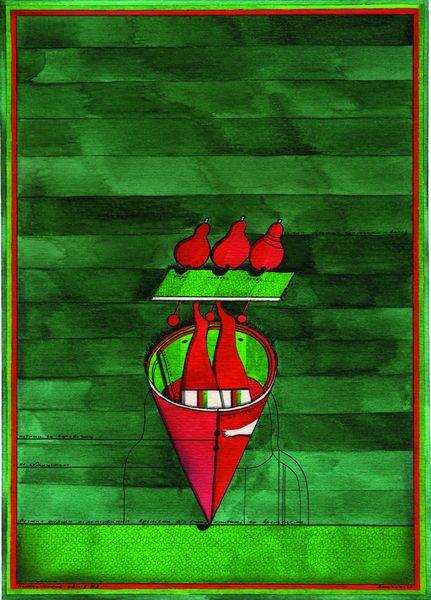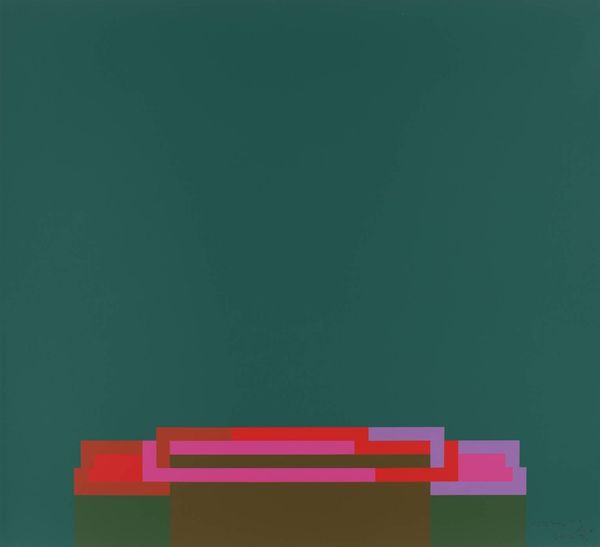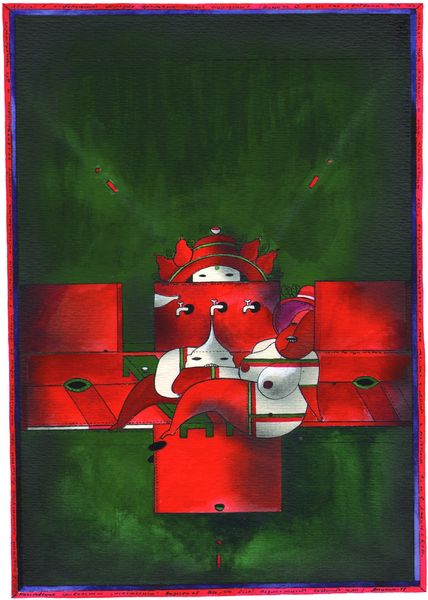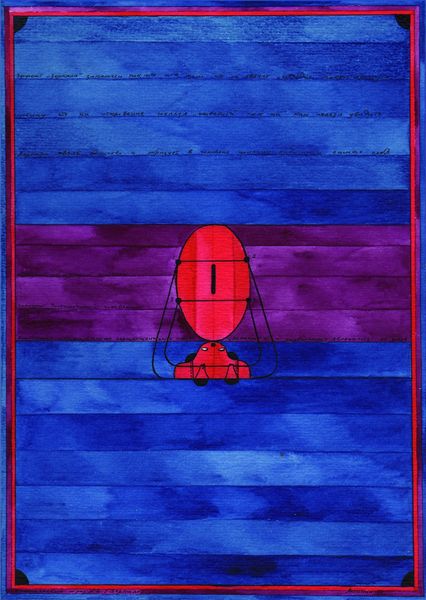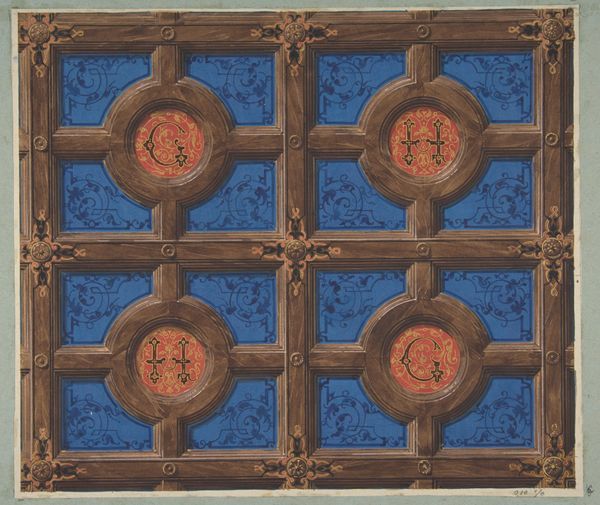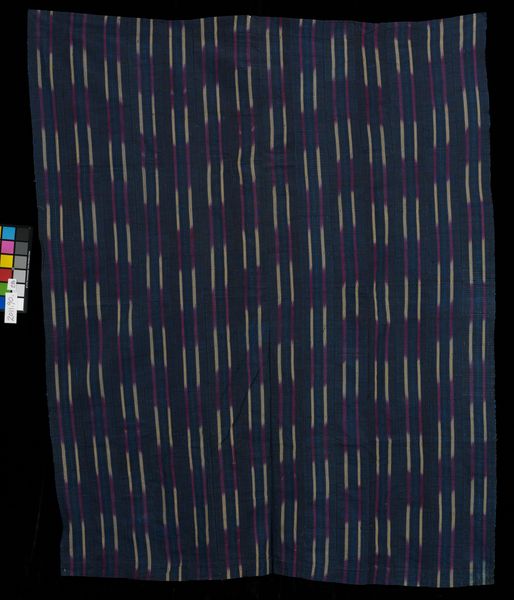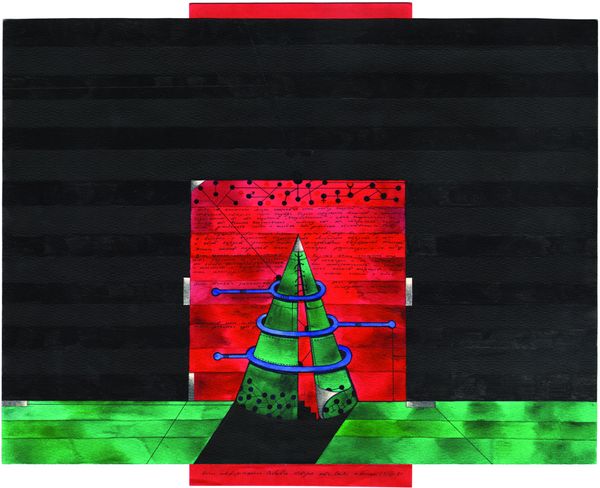
Copyright: Oleksandr Aksinin,Fair Use
Editor: So, here we have Oleksandr Aksinin’s “Canonical Image,” from 1979, created with mixed media. I am immediately struck by its oddness—it's abstract but there’s also something playful about it, even cartoonish. What do you make of it? Curator: Notice the artist’s use of contrasting colours. The dominant blues of the background are sharply juxtaposed with the reds and greens of the figure. This creates a visual tension, a certain unease despite the seemingly whimsical subject matter. What compositional elements draw your eye? Editor: Well, definitely the spools... the stacked, abstracted forms in the centre of the image. Curator: Precisely. And what about the way these forms relate to the linear elements behind them? Consider the deliberate flattening of space, characteristic of much early Soviet non-conformist art. Aksinin seems to be engaging with and subverting conventional perspective. He uses it to make a point about the way meaning is produced. How does the surface texture inform this, in your opinion? Editor: I see what you mean. It's almost like he's mocking traditional artistic conventions, the flatness contributing to this effect. The layered media creates texture and resists any illusion of depth. Curator: Indeed. By calling the piece "Canonical Image," Aksinin is perhaps questioning the very notion of artistic authority and established norms. Notice that pop-art elements are visible but also used ironically. The artist creates an artwork and an anti-artwork simultaneously. It's about the way the painting subverts any established framework or context. Editor: I didn’t pick up on that. It makes the title far more ironic. Thanks, I’ll never look at spools in the same way. Curator: An intriguing synthesis of the serious and the absurd, wouldn't you agree? It gives us plenty to consider.
Comments
No comments
Be the first to comment and join the conversation on the ultimate creative platform.
